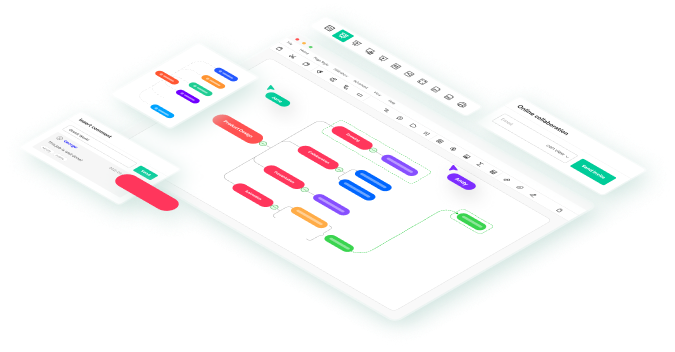You can take notes in countless ways, but not every note-taking method is the same. The Best Note Taking Methods can improve your comprehension of the topics you're learning and make it easier to review and edit the content when the time comes.
Research indicates that it can greatly improve memory, learning, and productivity. However, your ideal one might differ depending on your topic, learning preferences, and the lecturer's teaching style.
This article explores the 10 best note-taking methods for various learning environments and styles. Prepare to discover the full power of your brain and become an expert at remembering and keeping information!
List of 10 Best Note-Taking Methods
This section describes all 10 note-taking methods. Going through each description will help you understand how each method is unique and can help you learn complex concepts easily.
Let’s get started!

1. The Cornell Method: Reflect on What You Learn!
The Cornell method is a favorite among academics because it allows you to reflect on your notes as you write them instead of taking notes without any thought.
This is how it operates. Split your paper into three sections: a tiny area at the bottom summarises the ideas, the middle is for taking notes, and the left column is for writing down any queries or keywords. During meetings or webinars, you would jot down your ideas in the middle, add keywords on the left, and finish with a summary.
Envision yourself in a meeting where hiring a new employee is being discussed. You describe the main points made by those in the center, assign blame for left-wing viewpoints to those on the left (or use keywords to do so), and provide your conclusion in the summary.
Pros
- Urging students to go over and rephrase material to improve recall.
- Arranging and making it simple to review notes.
- Assisting kids in learning the most crucial concepts and vocabulary.
Cons
- Unsuitable for courses including many statistics and terminology
- Requires summarizing data immediately after the lecture.
- Before the lecture, note-taking pages must be prepared.
2. The Outline Method: Establish a Clear Hierarchy of Content!
Information is organized into a clear hierarchy using indentation while taking notes using the outline method. The outline method produces extremely well-organized notes, making it one of the most effective note-taking styles when suitable. It is also possible to apply the method in an inductive or deductive manner.
Since outline notes are one of the few frameworks that let you perceive the spatial relationships between concepts, they are among the easiest to review.
Nevertheless, the technique isn't always appropriate for taking notes throughout a live presentation, and a well-defined course framework is necessary for outlining.
Pros
- The optimal method for subjects is presented serially.
- Simple to learn quickly before tests.
- Enables note-takers to enlarge, rearrange, or add information.
Cons
- If you use this method, writing notes could take longer.
- Information condensation results in a loss of detail.
- Meetings must have a defined agenda.
3. The Mind Mapping Method: Visualizing Concepts
The mind mapping method involves creating a graphic and using branches to show relationships between various subtopics. The thinking map makes brainstorming easier during meetings. It can also be used to represent a workflow visually. You can manually draw a mind map or use some mind mapping tool like EdrawMind.

The EdrawMind’s mind mapping method takes a modern approach to mind mapping, using straightforward software that allows users to generate dynamic and graphically appealing mind maps. EdrawMind improves the classic mind-mapping process by providing customizable templates, collaborative capabilities, and interaction with other productivity software.
This makes it more efficient and accessible for both independent and team use. Whether you're brainstorming ideas, organizing thoughts, or planning projects, EdrawMind provides a complete solution for creating and sharing mind maps. Explore more mind-mapping features of EdrawMind and make your learning process easier.
Pros
- Makes use of digital note-taking resources.
- Excellent for students who prefer to study visually.
- Visually appealing notes.
Cons
- A little time-consuming.
- Requires the knowledge of connections between ideas.
- Not an efficient method to take notes in class.
4. The Quadrant Method: Organized Learning with Efficient Classification!
The quadrant is an organized note-taking method that involves splitting a page into four separate quadrants. This strategy is very helpful for jobs, projects, or brainstorming sessions since it offers a methodical way to arrange information.
Create four quadrants on a page by drawing two perpendicular lines to apply the quadrant method. Label about particular categories, priorities, or elements pertinent to the documented content that might be applied to each quadrant.
Subsequently, you can populate each quadrant with relevant data, facilitating the efficient classification and prioritization of details. This method is well-liked by people looking for a methodical and aesthetically pleasing way to take notes because it is flexible and adaptable to different situations.
Pros
- Can be adapted to diverse subjects and learning styles.
- Focused note-taking with a selection of core information.
- Organizes material into primary ideas, examples, questions, and applications
Cons
- Not suitable for open-ended exploration.
- Limited space in quadrants makes note-making challenging
- Predefining categories inadvertently excludes relevant information.
5. The Charting Method: Learn by Drawing Rows and Columns!
The charting method of note-taking groups information into rows and columns using charts. Under the correct conditions, the method can be useful, even though it does not apply to many subjects.
This method works well when dealing with subjects with factual or statistical data that can be arranged into tables.
However, it isn't appropriate to take notes during live lectures, on extremely intricate subjects, or on subjects where the spatial links between the content are crucial. Additionally, it is not appropriate for courses with many equation-based problems.
Pros
- Applicable to subjects requiring focus and statistical tracking.
- Helpful for reviewing and summarizing course material before tests.
- Supports brief, orderly, and tidy notes.
Cons
- Unsuitable for lectures if the structure is not provided in advance.
- You must set aside time to prepare your note pages beforehand.
- Useful for lectures but difficult for meetings with much discussion.
6. The Sentence Method: Transcribe Information into Lists!
The Sentence note-taking method, often known as the list note-taking method, is one of the most well-known techniques.
Taking notes using entire sentences divided into lines allows you to swiftly and thoroughly transcribe information. This method is popular since it is simple but requires quick note-taking skills for best results.
Reviewing your notes afterward can be difficult when using the list note-taking style. It is the suggested choice for hurried, unstructured classes for which you are unprepared.
Pros
- A simple method of documenting noteworthy data.
- Records information in a time-ordered fashion.
- Transferable to any other method after the class has ended.
Cons
- Lacks the necessary visual organization for many individuals.
- Challenging to go back and examine if the content seems disconnected.
- Not well-suited for data presented in graphical form.
7. The Boxing Method: Add an Aesthetic Touch to Your Learning!
Boxes are used in the boxing method of note-taking to divide topics on a page visually. The boxing method is a strategy that works well with handwritten notes, even though it was created for digital devices.
The boxing strategy produces notes that are easy to read and aesthetically beautiful. Additionally, the method fully uses features exclusive to digital devices, like lassoing, resizing, and relocating notes after writing.
It's one of the best note-taking methods for visual learners when combined with mind mapping.
Pros
- An easy way to remember complex subjects
- Visual concepts assist in quick memorization
- The compression of notes into boxes encourages clarity and conciseness.
Cons
- Not a structured, fast, and efficient solution.
- No prior knowledge of the relationship between concepts.
- Diverts students' attention from the actual subject to the presentation of notes.
8. The T Notes Method: Draw a Quick Synopsis!
Using a systematic method, the T Notes note-taking method divides your paper into two columns that form a "T" shape. Information is arranged and summarized in this manner throughout readings, lectures, and debates. People who need to jot down notes rapidly will find it indispensable in every aspect of life.
It's an easy approach that starts with writing your primary subjects at the top of a page, followed by subtopics under each. You can write a quick synopsis or topical notes beneath each subtopic.
In this method, all of your information is easily understandable and presented in an ordered manner.
Pros
- Assists in categorizing extensive data sets.
- Simple to go over and remember information.
- Convenient for adding or expanding upon fresh data.
Cons
- It might be unable to support innovative or non-linear thinking.
- Topics requiring great depth and information are not my strong strength.
- Not as good as direct transcribing.
9. The Blurting Method: An Active Recall to Learned Concepts!
The Blurting Method is unquestionably one of the most effective strategies to recognize where you sit in your knowledge and take action simultaneously instead of highlighting material passively or going over your notes again.
One active recall method that can help you learn and retain information is the blurting style of note-taking. It has been demonstrated that active recall is a successful learning strategy that entails testing oneself on the learned content.
At its most basic, the blurting approach involves reading a passage from a text or notepad, shutting it, and then jotting down as much information as you can recall.
Pros
- Improved memory retention is the result of recall.
- This highly adaptable system may be tailored to meet your requirements.
- It forces you to put the knowledge into your own words, improving your understanding.
Cons
- Some people might find this procedure tiresome because of how long it takes.
- It is not a substitute for taking notes during live classes.
- Mentally, it's exhausting.
10. The Feynman Method: Comprehend Complex Concepts Easily!
The Feynman method is a potent method for learning and comprehending difficult concepts. It is named after the physicist Richard Feynman, who was awarded the Nobel Prize in physics.
The key to this method is conveying a topic in layman's words as though you were teaching it to someone else. The first step in the procedure is to choose a study topic and dissect it into its most basic elements.
The person then explains these concepts in simple terms, eschewing technical jargon. This method can be used in various academic fields and benefits those studying intricate scientific concepts, deep learning, and memory retention.
Pros
- Simplifies and articulates complex concepts.
- Reveals gaps in knowledge, facilitating targeted review.
- Promotes engagement through active processing and self-explanation.
Cons
- Time-intensive, especially for complex subjects.
- Effectiveness depends on accurate self-assessment of understanding.
- Not ideal for detailed procedural knowledge.
Conclusion
As you may have observed, each method works well in a particular circumstance. Every approach has benefits, depending on what you're studying and your tastes.
It's also important to remember that everyone studies and learns. Keeping this in mind, think about your style and select the method that works best for you.




